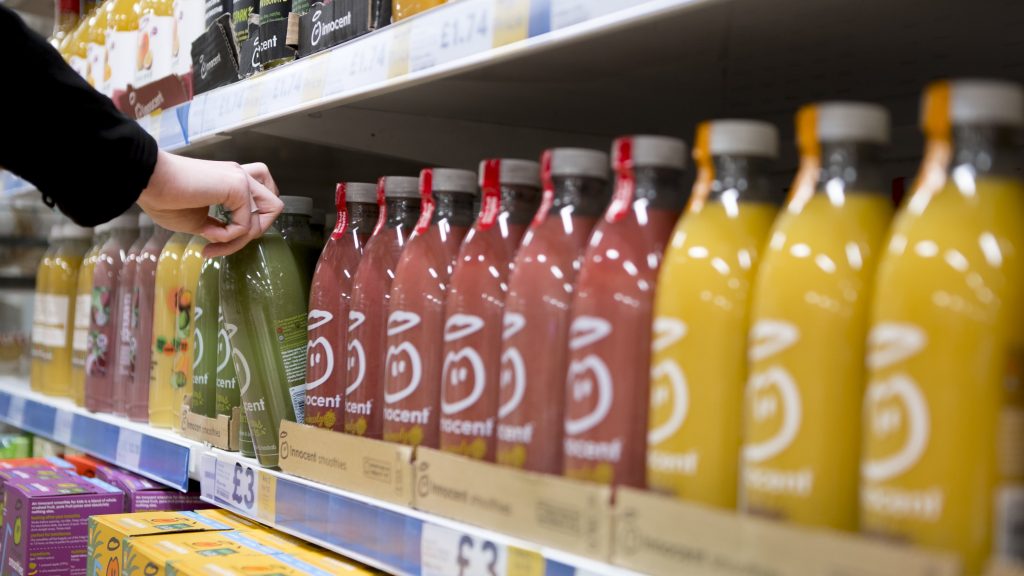A thought piece by James Lamplugh, Sales and Marketing Director
As inflation continues to rise to record levels, we are seeing discount stores increase their market share as consumers become savvier on how to get more for their money. With 2022 predicted to be another booming year for discounters – a prediction of a whopping increase of 6.6% in sales – the sector is set to hit £34.4 billion, whilst leading retailers continue to struggle with a 40% drop in margins over the past ten years.
Availability is the key driver for consumer loyalty and in turn profit. Lack of product availability not only leads to unhappy customers who seek alternative retailers, but also brings with it a dip in sales and profits for both brands and retailers. Brexit had and still is – leaving its mark on supply chains and staff shortages. Combine the fallout from Brexit with traditional retailer systems, which are set up to minimise waste and run it at an acceptable level of availability, a perfect storm of low availability has been created within leading retailers, which is further pushing customers and profits toward discounters.
To be more competitive with discounters – top supermarket retailers are looking to reduce costs to help minimise the impact of inflation on the cost of the shopping basket. One of their key strategies is massively reducing their stock holding, however, the consequence of this is that stores have less stock in store to maintain availability 24/7. This is amplified by the changing shopper behaviour and the growth of online sales, which results in store shelves being ‘shopped’ by mid-morning, impacting availability for shoppers throughout the day. With the focus now on minimising budgets that are tied up in unwanted stock, and beating competition from discount stores, there has been a huge change in the end-to-end process of stock deliveries to main retailers. Today, we are seeing retailer systems delivering a ‘just in time’ stock approach into stores. This enables them to be more competitive on pricing against the discount stores whilst creating a blockage in availability for consumers, brands and even the retailer.
As a consumer, if I’m going into a shop to buy a product and repeatedly that product is out of stock, that whole advantage of going to my favourite main retailer diminishes. This can be evidenced by the recent Heinz / Tesco price dispute, which will be driving shoppers to other retailers to ensure they can still purchase their favourite brands. What the industry is seeing today is that people are turning to discount retailers for items that they need regularly, at a price they can better afford, with the bonus that it will be in stock. Availability is absolutely key and when it is not there, retailers lose their brand loyalty advantage.
With part of the new HFSS legislation coming into effect in October, the ban on unhealthy products being promoted in key locations – such as aisle ends, store entrances and checkouts, puts further pressure on retailers looking to deliver on availability for brands and consumers.
So, what can be done to help retailers and brands win the availability fight against discounters?
The answer is a combination of technology used in conjunction with amazing staff in store. By using data analytics and remodelling retail strategies, which give real-time insights, brands and retailers can see a reduction in waste, whilst still delivering increases to stock availability. Using machine learning to predict availability levels based on expected sales rather than actual sales and convert this to availability can deliver massive increase in sales. For big brands, a 1% improvement in availability over a year could be worth £5.5million.
Recent insights from McKinsey Global Insight estimates that retailers that fully utilise data analytics throughout the organisation could increase their operating margins by more than 60% – likewise, those companies that fail to improve how they use data will no longer be able to compete with the competition.
Technology and data use can also help support value-driven collaboration as it enables the head office to really understand what is happening in the stores. Research from Accenture has revealed that successful collaborators can generate up to 10% in operating margin improvements, raise store-shelf stock rates by 5-8%, reduce inventories by 10%, cut logistics by 3-4% and yield a 5-15% reduction in manufacturing costs. Collaboration is also needed by sharing data not only internally but also with external partners – this will enable greater insight and understanding on how to deliver sales growth across the entire supply chain.
By embracing technology, the retail sector is at a great junction of progress – not only for retailers and brands but for consumers too. Greater availability means happy customers, and happier brands – whilst leading retailers are fully equipped to beat the competition from discounters.




